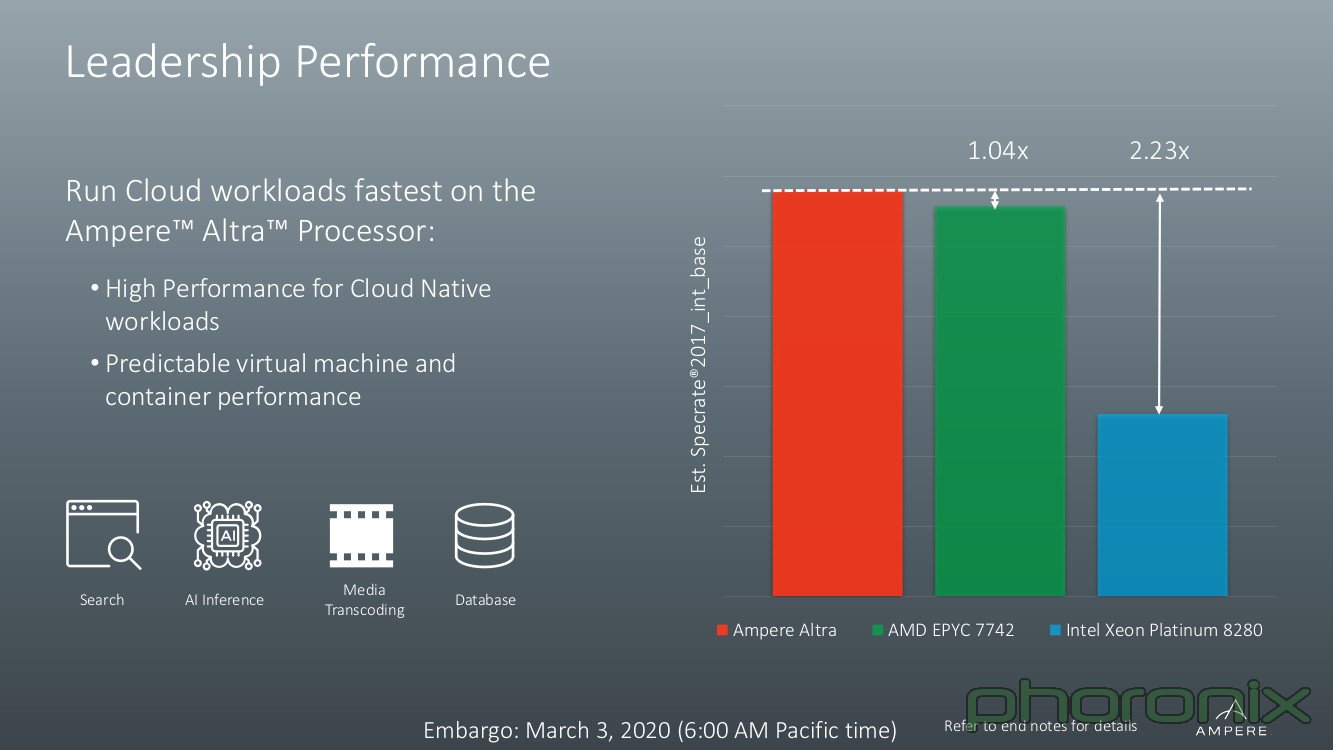erek
[H]F Junkie
- Joined
- Dec 19, 2005
- Messages
- 10,871
Finally heatin up! Hardcore!
"The Q80-33 will eventually pass the torch to the Altra Max, which will flaunt up to 128 cores. Ampere has confirmed that the Altra Max (codename Mystique) will be socket-compatible with current Altra offerings. We suspect that the the Altra Max will have an M prefix in its model names.
Ampere will sample the Altra Max in the fourth quarter of this year, and the processor should be available next year.
The company is also firm on its commitment to roll out the 2nd Generation Altra processors (codename Siryn) in 2022. If the nomenclature remains the same, the Siryn should sport the S prefix. The next-generation processors will leverage TSMC's 5nm process node.
Ampere expects to sample Siryn in the latter part of 2021 with a scheduled launch in 2022."
https://www.tomshardware.com/news/ampere-preps-7nm-128-core-server-cpu-to-take-on-amd-and-intel
"The Q80-33 will eventually pass the torch to the Altra Max, which will flaunt up to 128 cores. Ampere has confirmed that the Altra Max (codename Mystique) will be socket-compatible with current Altra offerings. We suspect that the the Altra Max will have an M prefix in its model names.
Ampere will sample the Altra Max in the fourth quarter of this year, and the processor should be available next year.
The company is also firm on its commitment to roll out the 2nd Generation Altra processors (codename Siryn) in 2022. If the nomenclature remains the same, the Siryn should sport the S prefix. The next-generation processors will leverage TSMC's 5nm process node.
Ampere expects to sample Siryn in the latter part of 2021 with a scheduled launch in 2022."
https://www.tomshardware.com/news/ampere-preps-7nm-128-core-server-cpu-to-take-on-amd-and-intel
![[H]ard|Forum](/styles/hardforum/xenforo/logo_dark.png)
